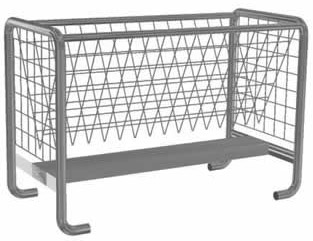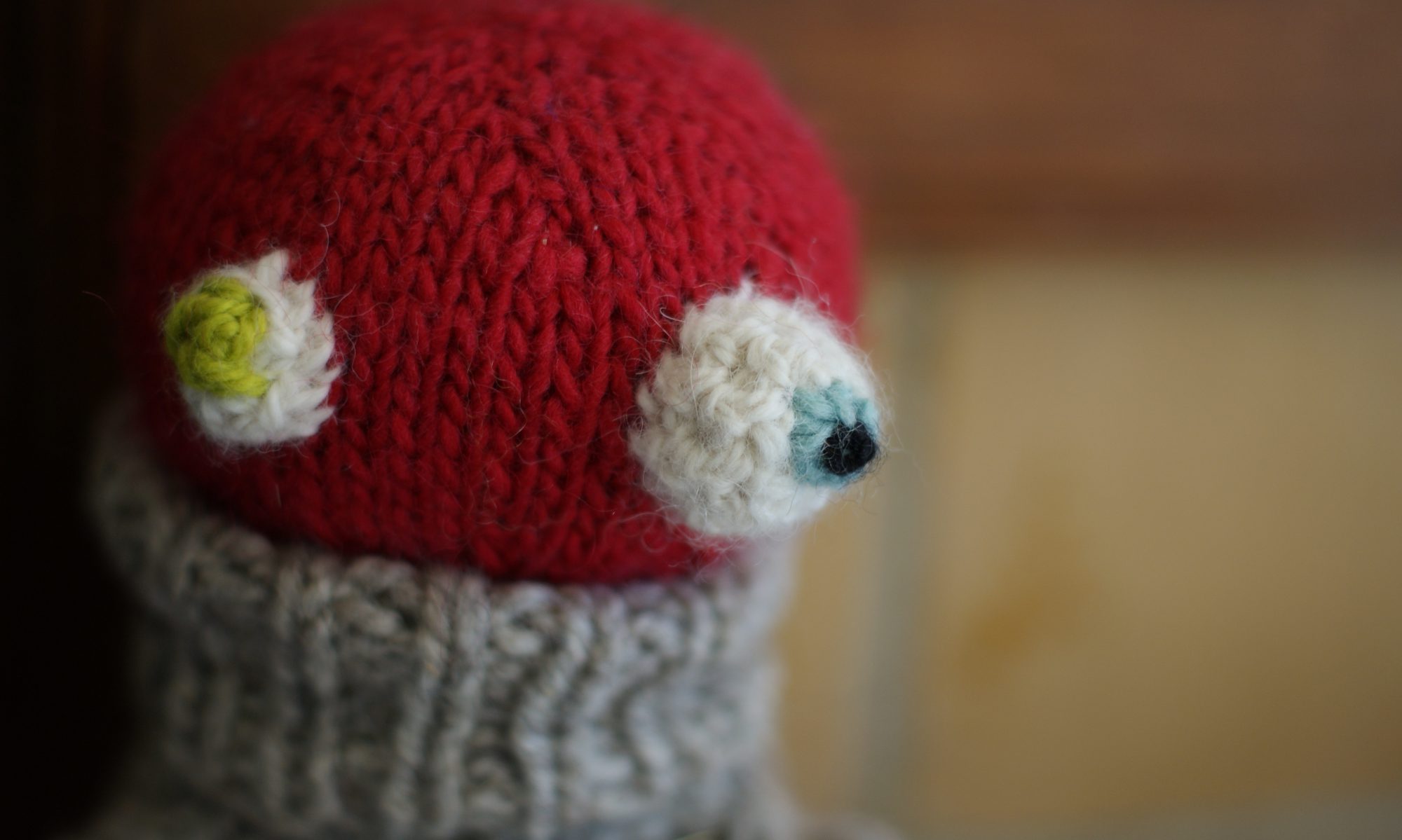
I just got a new Knit Kit from Knit Kits Jewelry to try out, and just in time for holiday giving, I get to offer one as a contest prize for y’all!
They sent me the Regal Cuff kit, which includes fine silverplated copper wire, a long string of delicate freshwater pearls, and an enameled silverplated clasp. It’s meant for a bracelet, but there’s definitely enough wire for a choker, so that’s what I’m making! I’ll post my results, along with the contest, next week.


The sheep are really growing some marvelous fleece! Both of the Shetlands have longer fleece now, in November, than they did when they were sheared at the beginning of April! My sheep are too fidgety to stay still while I hold their fleeces open, but if I can wrangle Ron into holding them for me, I’ll get some good fiber pictures soon. In the meantime, I have a couple of neck pictures. The fiber there is open to the elements, so it’s dirtier and unprotected–and doesn’t grow as long, except maybe on the Shetlands, but you can get an idea of the nature of the fiber.
Here’s Mr. Shivers busting out of his Sheep Suit. I don’t think I have any fresh big ones left, so I’ll probably need to order him one–or I could try my hand at making one.

This is his first adult fleece, and it’s very different from his lamb fleece, which had chocolate tips. The first shows him now, the next two are before and after shearing last April (you can also see how much his horns have grown since last spring).



Uncle Honeybunch has a bigger coat on, so he’s not bustin’ out, but he’s just as puffy–again, easily as puffy as he was just before shearing this year. If you press on his jacket, he feels like a big cushy pillow.

Early April, before & after (the second shows the same three animals you see above, only naked):


Jayne Cobb’s neck. He’s a Romney with an incredibly fine, crimpy fleece. You can see how tight and fine and lovely he is, even at the neck.


Here’s his mom’s neck. Fudgy’s fleece isn’t yet as long as it was when she was sheared, but it’s looking very good. She’s only had to go up one blanket size, but she & Uncle Honeybunch are wearing the bigger blankets from Midstates Wool Growers, so they accommodate more wool growth than the Sheep Suits (they don’t wear nearly as well, though–I’ve had to repair both of them, but none of the over half-dozen Sheep Suits I’ve used). Her fleece is quite soft, but not as fine or crimpy as his. The tips are sun-bleached, but if you look into the creases, you can see the dark color and nice crimp. I’ve got 2 fleeces from Fudgy, her lamb fleece and this year’s clip. I think I’m going to have it all made into roving, then have half of that spun up into yarn. I’m curious to see if she has more salt in her fleece this year–I’m going to keep a diary of samples of all of them, because I’m a big nerd.

The Merinos are obviously shorter than the Shetlands as well, but they’re coming in nicely. Ronnie’s is a bit longer and less crimpy than Hokey Pokeys, but I’ve been really pleased with it–it’s denser and crimpier than I expected from her newborn lamb fleece–hers was very open, almost Shetland-like, while his was all supertight curls. But hers has grown out beautifully.

The fun thing with the colored lambs is that their fleece changes over time. I think it typically gets lighter. They could just get lighter brown, or maybe they’ll turn gray, like their dad, Roger. Here’s his fleece:

The sheep are asking for this for Christmas, only they want the one with the double trough to better catch spilled hay. If Woolly Santa gives it to them, I’ll need to mod it out with a grid across the trough to keep the piggier ones (read: the bachelors) from pushing out the more timid ones (read: Ronnie) when I grain them
.
I’ve done the same thing on my cheapie discount PortaTroughs. On the large one, I just bolted a segment of cattle panel over the top. On the small one, I only had an end scrap, which made me more resourceful, so I actually came up with a better design. I drilled holes into the inside of the trough for all the short ends and one of the long ends, then popped all the ends into their holes and secured the one loose end with a U-bolt just inside the trough. It looks nicer, and I only have to worry about one pair of nuts loosening up over time, versus 4pr. But they both do the trick, keeping each nose in a separate square, so they can’t shove their neighbors out of the way. Now I can grain them all together. Before, I had to separate the Shetlands, and half the time, I’d have to give Ronnie her own bucket, which one of the other sheep would eventually discover anyway. Streamlined feeding is easier on me, but more importantly, easier (read: cheaper) for a future sheep-sitter.


They’re also asking for one of those mineral feeders with a fin on top so it swivels out of the rain, and for a 16 gallon heated tub, which I think is really gracious of them, because it will also make my life easier. Not that I don’t like lugging 40-pound buckets of hot water from the basement; it’s marvelous.
Speaking of water, pretty soon we’re going to be in water-lugging territory. So far we haven’t had freezing temperatures for more than a couple hours going, so I’ve been able to use the hose. But what happens when it’s too cold for the hose? I get stuck lugging 40-pound buckets is what. With the heated bucket, I wouldn’t have to lug as many. When the water freezes on top in a rubber bucket, you kick the side to break up the ice so they can drink, but when it freezes through, you have to tump it over to knock out the chunk of ice, and start over again, sometimes a couple times a day, so you end up carrying way more water than will a regular refill. I can’t really think of a way around it without plumbing the barn, which we can’t afford. Maybe some fancy rainwater collection and heating system on top of the barn. But all the open collection systems I’ve seen are for temperate climates & the heating systems are enclosed. Hm. Maybe a big tank you’d fill in the fall & then insulate & paint black? We have a huge old water pressure tank in the basement, but it seems too big to move. And anyway, it would probably weigh too much filled not to crush the barn. I guess you could place it next to the barn on the south side and have some kind of hand-pump for it, but still, there’s getting it out of the basement in the first place…. I really wish I had a Hulk or a Superman or Magnús Ver Magnússon to help me with chores. Until then, buckets it is.

My Tedious Project of the Week is untangling, cutting & splicing this fence. This is the fence poor Mr. Shivers got tangled up in last year. It wasn’t energized at the time; I was just using it to block off some hay and lumber. When we found him, he was completely tangled up, head and hooves, face down in the mud for who knows how long, poor thing. I thought he was dead and leaped over the fence and cut him out. He was really spooked, but fine. Anyway, now I’ve got this tangled, mangled length of fencing I’m going to try to splice back together.

Currently, I’m giving them small pastures rotated frequently (because though the grass hasn’t all died, it has stopped growing). I’m making long corridors to the ungrazed sections instead of open pasture, so they’re forced to graze the tall stuff (they’ll always hit the tender growth first, given the choice).
With a little more length (hopefully my repaired fencing will give me enough), I’ll be able to reach all the way out to the close north fence! I’d need to get at least one more fence section to graze the south pasture, though. Either that, or figure out how to lead them out there myself, a scary proposition.
My master plan for the winter is to have them graze down the whole pasture (I’m guesstimating maybe 5 acres that aren’t wooded) in sections. The dead grass won’t be enough to sustain them without hay, but the point is to give them more room and exercise, to keep the secure barnyard cleaner (my flock’s nearly double the size it was last winter, so hygiene is a bigger challenge), to keep their routine going, to evenly graze all the remaining prairie grass and weed seed heads, and to fertilize in the process, so we’ll have the best possible pasture next year. The side benefit of having them graze out the dead stuff is that I’ll be able to gather up all the random branches and debris that kept us from haying everything last year. Failing that, grazing down a solid perimeter around the barnyard will mean if I have the fire department come out and burn (what my hay man recommended to clear out all those branches), it will be easier to control. Either way, I want to maximize my hayfield so I don’t have to pay for any hay if at all possible. In the meantime, they’ll go through less hay this winter and be happier for the room, exercise, and routine.

I love reading about your sheep. The fleeces look wonderful. I haven’t taken up spinning yet (don’t need another thing to obsess over at the present moment), but your sheep always make me want to learn.
The bracelet is cool. Am awaiting your results!
Your sheep are just gorgeous!! Beautiful fleece! I’m super excited to hear about the hens too and to see how the one who had the incident earlier this year is doing.
I too enjoyed the lovely sheep! ^_^ Thanks for sharing!
Hi Nikol…..your sheepies are so adorable and it makes me regret that I didn’t get some shetlands from Tina before she liquidated. I am envious of your grass and you are indeed lucky to still have some green stuff for the sheep to enjoy. Ours has long since gone on our prairie desert. Happy Thanksgiving. BTW I posted a pic of the new pup on my blog she is coming on Sunday. Yippee. Also I sent you a PM re: workshop, and residency ideas. have a pleasant holiday!